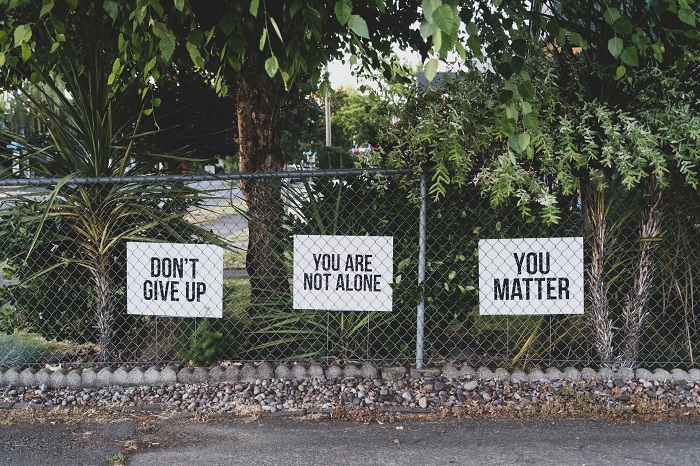- MN ABE Connect
- Archive
- Suicide Prevention Awareness
 January 18, 2021
January 18, 2021
Suicide Prevention Awareness
Wendy Sweeney, MA LP, PANDA ManagerFear, worry, and isolation from the COVID pandemic has increased depression, anxiety and the suicide rate in Minnesota. Suicide is the 8th leading cause of death in Minnesota. This is a time to raise awareness about suicide, become knowledgeable about mental health resources and reduce stigma about this topic that is often seen as taboo by many.
Suicidal thoughts can affect anyone regardless of age, gender, race, socioeconomic status or background. In fact, suicide is often the result of untreated depression and a sense of hopelessness. Suicidal thoughts, although common, should not be considered normal and often indicate more serious problems.
When individuals die by suicide, they leave behind friends and family to navigate the tragedy of loss. In many cases, those affected by a suicide loss are left in the dark about their loved one’s intent and sometimes feel guilty about what they might have done or not done that could have helped. Too often, the feelings of shame and stigma of suicide prevent people from talking openly about it.
Prevention is the key to ending suicide! Learning to talk about it, asking questions of those making suicidal comments, and providing relevant resources are important skills to develop.
Warning signs that might indicate a higher probability of suicide:
- A major loss, such as job loss, divorce, or death of a loved one
- Financial insecurity
- Trauma
- Belief that problems are not solvable
Unsolvable problems promote feelings of hopelessness - Increased alcohol or drug use
- Social withdrawal from family and friends
- Lack of a support network
- Dramatic mood swings
- Impulsive or reckless behavior not seen before
- Talking, writing, or thinking about death
- Giving away possessions
- A previous suicide attempt
- Threats or comments about ending their lives, such as “I wish I wasn’t here” or “Life is too hard”
- Easy access to tools needed to commit suicide, such as firearms or prescription medications
 What you can do:
What you can do:
- Connect and get to know your students.
Let your students know you care. Everyone needs social emotional support. - Teach problem solving skills.
- Promote resiliency in managing life challenges, in spite of adversity.
- Share mental health resources and 24/7 crisis lines.
- Become educated about suicide prevention best practices and how to comfortably talk about suicide (see free courses below).
If you or someone you know is suicidal, call
The National Suicide Prevention Lifeline
(800)-273-TALK (8255) or call 911 immediately.
Professional development:
PANDA’s free online Suicide Prevention course. Wendy Sweeney, MA LP, PANDA Manager, offers a free online course titled Suicide Prevention for Adult Educators, intended to address CEU requirements for suicide prevention best practices. Take the course >>
PANDA’s free online course on Teaching ABE Students About Mental Health. Colleen Crossley, Robbinsdale Adult Academic Program teacher and PANDA consultant, developed this free course for ABE teachers. It is intended to address the re-licensure area of Understanding Key Warning Signs of Early Onset Mental Illness. Take the course >>
Resources:
For a list of 24/7 crisis lines and a printable list of mental health resources you can share with students, go to the second paragraph on PANDA’s website at: https://pandamn.org/mental-health/resources-6/
NAMI-National Alliance on Mental Illness www.nami.org
National Institute of Mental Health https://www.nimh.nih.gov/health/statistics/suicide.shtml
Newsletter Signup
Get MN ABE Connect—the official source for ABE events, activities, and resources!
Sign UpArticle Categories
- ABE Foundations/Staff Onboarding
- ACES/Transitions
- Adult Career Pathways
- Assessment
- CCR Standards
- Citizenship
- COVID-19
- Cultural Competency
- Digital Literacy/Northstar
- Disabilities
- Distance Learning/Education
- ELA
- Equity/Inclusion
- ESL
- HSE/Adult Diploma
- Listening
- Math/Numeracy
- Mental Health
- Minnesota ABE
- One-Room Schoolhouse/Multilevel
- Professional Development
- Program Management
- Reading
- Remote Instruction
- Science
- Social Studies
- Speaking/Conversation
- Support Services
- Teaching Strategies
- Technology
- Uncategorized
- Volunteers/Tutors
- Writing